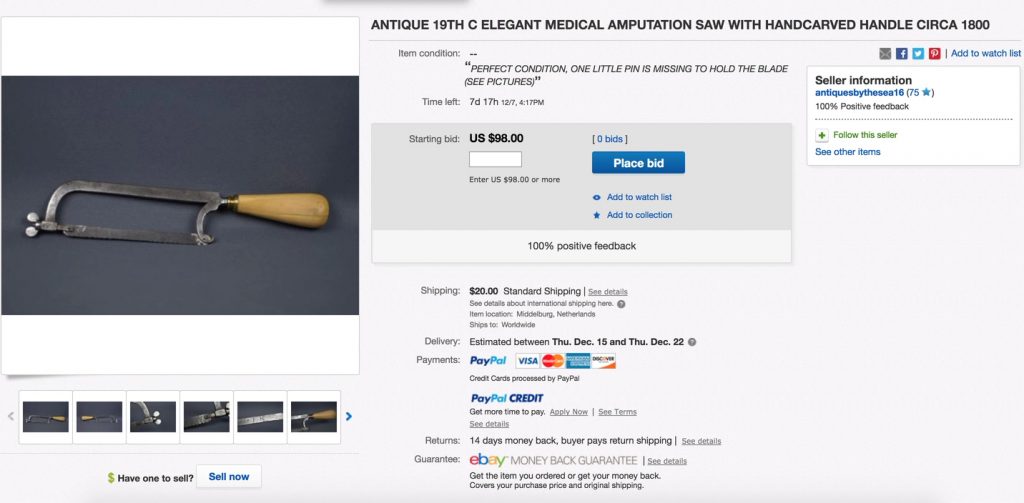When buying an antique surgical amputation saw–and I am not asking what you are planning on doing with it, that is your business–keep an eye out for fakes. When I say fake, I do not mean “reproduction” although these too may exist, I have seen a few. I really mean that most saws of the 1600s and 1700s where made for carpentry and you can buy these on ebay for a few dollars. These same saws are often falsely advertised (maybe by an ignorant seller, who knows) for about $600-$1200 USD.
Remember that in the 1600s and 1700s there was no United States of America and no surgical instrument makers on the continent. Surgeons needed to get their instruments from Europe, usually the United Kingdom.
So there are two main things to look for to confirm you are buying a true antique surgical amputation saw (and this probably holds true for buying many antique surgical instruments of this time period:
1. Look for an item that is ornate in it’s handle and body.
2. Look for a maker’s mark that you can confirm by checking your medical antiques books (Edmonson and Bennion).
Below is an example of saws falsely advertised on ebay.com.


